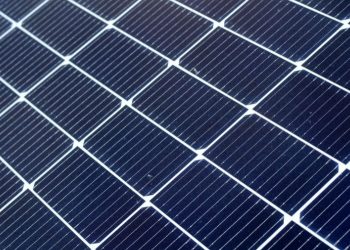The dream of owning and living in a tiny home has captured the imaginations of many. Tiny homes offer the promise of simpler living, reduced financial burdens, and a smaller environmental footprint. But turning that into a reality requires careful planning and execution, especially when it comes to powering your tiny home.
Solar energy is a compelling solution as it provides long-term cost savings and a pathway to greater self-sufficiency. This post is your guide to building a solar-powered tiny home. We’ll cut through the hype and focus on the essential steps.
Planning and design
Building a truly functional and efficient solar tiny home starts with cold, hard facts.
Assessment
First, ditch the guesswork. Slapping on a few panels and hoping for the best is a recipe for disaster. Accurate energy needs are the foundation of a successful solar setup.
So, start by calculating your daily and weekly consumption. Think realistically: How often will you use the air conditioner? How many hours of lighting do you need? Also consider appliances like refrigerators, washing machines, and laptops. While the average Australian household energy consumption is around 15 kWh per day, according to the Australian Energy Regulator, your tiny home, by design, should use considerably less. Targeting a significantly lower consumption is key because the smaller your energy needs, the smaller (and cheaper) your solar system can be.
A good tip is to conduct an energy audit of your current living situation to get a baseline. Then, realistically adjust downwards for the smaller footprint and minimalist lifestyle of a tiny home. You can also use online energy calculators.
Solar system
Now, let’s talk hardware. Your solar system is more than just panels—it’s a carefully engineered system with key components: the solar panels, inverter, batteries, and charge controller.
The best tip here is to don’t skimp on professional installation. Incorrect wiring can be a fire hazard, which is why you need to work with a certified electrician when dealing with any solar installation.
Regulations
Australia’s regulatory landscape for tiny homes and solar installations is complex. Each state and territory has its own rules, which is why you need to research thoroughly.
· Permits: You’ll likely need planning permission for the tiny home, and potentially separate approvals for your solar installation. Check with your local council before you start building.
· Building codes: Ensure your tiny home complies with the National Construction Code (NCC) and any relevant Australian Standards. This includes structural integrity, fire safety, and electrical wiring.
· Grid connection: If you plan to connect your system to the grid, follow your electricity distributor’s guidelines and potentially get their approval. This usually involves additional costs and paperwork.
· Key resource: Your state or territory’s planning and building department website is your best friend. Don’t rely on hearsay—get the information directly from the source. Failing to comply with regulations can lead to hefty fines and even force you to dismantle your tiny home.
Building smart
Your tiny home’s construction is where your vision takes physical form. However, it’s not all about aesthetics; rather, it’s about building smart for energy efficiency and longevity. How?
Construction strategies for efficiency:
· Insulation is everything: Insulation is vital to our diverse climate, which means a proper home will keep your home cool in summer and warm in winter. As a result, this will drastically reduce your reliance on heating and cooling. Consider high-performance options like double-wall construction with sheep’s wool, recycled denim, or rigid foam insulation. Aim for a minimum R-value of R2.5 for walls and R4 for the roof.
· Ventilation matters: Aside from proper insulation, you also need proper ventilation for comfort and to prevent moisture buildup. Add cross-ventilation through strategically placed windows and consider installing a heat recovery ventilator to exchange stale air with fresh air while minimising energy loss.
· Material choices: Go for sustainable and locally sourced materials whenever possible. This reduces transportation costs and environmental impact. Consider engineered timber, recycled materials, and lightweight steel framing, which provides an excellent strength-to-weight ratio and is resistant to termites.
Solar installation
One of the things that get talked about a lot when installing solar in a tiny home is the approach—DIY or professional? While some aspects of tiny home construction lend themselves to DIY, solar installation is best left to the pros. As mentioned, incorrect wiring can be dangerous and may void warranties.
Next, you need to be able to maximise your solar gain and you can do this with the right placement of solar panels. North-facing roofs are generally ideal in Australia. Adjust the angle based on your latitude for optimal year-round performance.
Another area where expertise is crucial is wiring and connections. Proper wiring ensures efficient energy transfer and prevents electrical hazards. Double-check all connections and ensure they are weatherproof.
Living efficiently
Now comes the best part—living in your solar-powered tiny home. However, sustainable tiny home living isn’t about having solar panels; it is about adopting habits that maximise your system’s effectiveness and minimise your environmental impact. Here are some tips to live efficiently:
· Monitoring and maintenance: Monitoring is key to ensure your system is performing at its best. Get familiar with your inverter’s display, which usually shows energy production, battery levels, and system status. Many systems provide online monitoring platforms to help you track performance remotely. Regular maintenance is equally important. You can do this by keeping your solar panels clean and checking your connections and wiring periodically. You should also schedule professional inspections every few years.
· Energy optimisation: This involves energy-efficient appliances and LED lighting. You can also consider smart scheduling by timing your energy-intensive tasks for sunny days when your panels are producing maximum power.
Building a solar-powered tiny home is an investment in your future – a future with more freedom, sustainability, and connection to the natural world. Don’t be afraid to ask questions, do your research, and seek professional advice when needed.


















